
The vertical line test for functions is the focus of this lesson plan.
- Subject:
- Mathematics
- Material Type:
- Activity/Lab
- Provider:
- Interactive
- Date Added:
- 04/26/2022

The vertical line test for functions is the focus of this lesson plan.

Pump gas molecules to a box and see what happens as you change the volume, add or remove heat, and more. Measure the temperature and pressure, and discover how the properties of the gas vary in relation to each other. Examine kinetic energy and speed histograms for light and heavy particles. Explore diffusion and determine how concentration, temperature, mass, and radius affect the rate of diffusion.
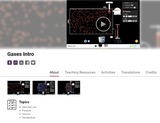
Pump gas molecules to a box and see what happens as you change the volume, add or remove heat, and more. Measure the temperature and pressure, and discover how the properties of the gas vary in relation to each other

Adjust mountain snowfall and temperature to see the glacier grow and shrink. Use scientific tools to measure thickness, velocity and glacial budget.

This lesson plan is designed to help the student understand how to plot functions on the Cartesian plane and how the graphing of functions leads to lines and parabolas.
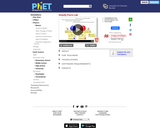
Visualize the gravitational force that two objects exert on each other. Adjust properties of the objects to see how changing the properties affects the gravitational attraction. (Phys 3.1, 3.3, 3.4)
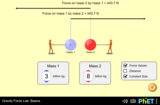
Visualize the gravitational force that two objects exert on each other. Discover the factors that affect gravitational attraction, and determine how adjusting these factors will change the gravitational force. (Phys 3.3)
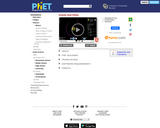
Move the sun, earth, moon and space station to see how it affects their gravitational forces and orbital paths. Visualize the sizes and distances between different heavenly bodies, and turn off gravity to see what would happen without it! (Phys 3.1, 3.3, 3.4)
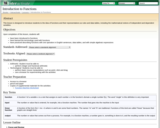
This lesson introduces students to functions and how they are represented as rules and data tables. They also learn about dependent and independent variables.

The applet in this lesson allows students to manipulate variables and see the changes in the graphed line.

When is a molecule polar? Change the electronegativity of atoms in a molecule to see how it affects polarity. See how the molecule behaves in an electric field. Change the bond angle to see how shape affects polarity. Need to have JAVA installed to view the Real Molecules pportion of the simulation.
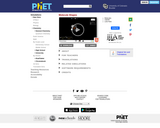
Explore molecule shapes by building molecules in 3D! How does molecule shape change with different numbers of bonds and electron pairs? Find out by adding single, double or triple bonds and lone pairs to the central atom. Then, compare the model to real molecules!

Turn light source on to explore. Observe what happens in the observation window as you set up different combinations of light source and molecule. Note this simulation is the first to support our pan and zoom feature, so zoom in for a closer look, if you need to.

Printables for teachers on healthy foods, healthy habits, and activities by Nourish Interactives.
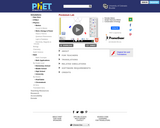
Play with one or two pendulums and discover how the period of a simple pendulum depends on the length of the string, the mass of the pendulum bob, the strength of gravity, and the amplitude of the swing. Observe the energy in the system in real-time, and vary the amount of friction. Measure the period using the stopwatch or period timer. Use the pendulum to find the value of g on Planet X. Notice the anharmonic behavior at large amplitude.
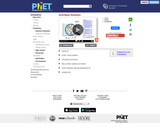
How do strong and weak acids differ? Use lab tools on your computer to find out! Dip the paper or the probe into solution to measure the pH, or put in the electrodes to measure the conductivity. Then see how concentration and strength affect pH. Can a weak acid solution have the same pH as a strong acid solution?
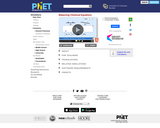
How do you know if a chemical equation is balanced? What can you change to balance an equation? Play a game to test your ideas!
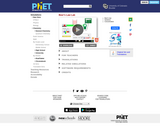
ÒThe thicker the glass, the darker the brew, the less the light that passes through.Ó Make colorful concentrated and dilute solutions and explore how much light they absorb and transmit using a virtual spectrophotometer!
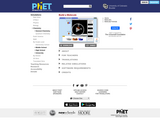
Starting from atoms, see how many molecules you can build. Collect your molecules and view them in 3D!
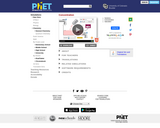
Watch your solution change color as you mix chemicals with water. Then check molarity with the concentration meter. What are all the ways you can change the concentration of your solution? Switch solutes to compare different chemicals and find out how concentrated you can go before you hit saturation!